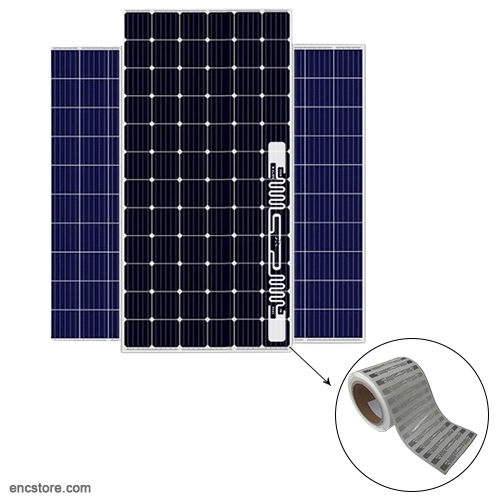In the search for a greener and sustainable future, the Ministry of New & Renewable Energy (MNRE) has set guidelines that highlight the importance of Radio Frequency Identification (RFID) technology in solar power systems for commercial purposes. This innovative approach aims to enhance identification and monitoring, paving the way for a more efficient and accountable solar energy ecosystem.
MNRE Guidelines and RFID Integration:
According to MNRE guidelines, every Solar Photovoltaic (PV) Panel must be equipped with an RFID tag designed to withstand various environmental conditions. RFID tag for solar module play a crucial role in the identification and monitoring of solar panels, ensuring compliance with industry standards. Users have the flexibility to mount RFID tags either inside the PV panel's laminate or on its surface, offering versatility in implementation.
Key Information Stored in RFID Tags:
Leading RFID tag manufacturers are developing innovative RFID solar tags that are attached to solar panels and contain vital information crucial for tracking and monitoring. This includes:
- Solar PV Module Manufacturer’s Name
- Name of Semi-Conductor Silicon Solar Cell Manufacturer
- Date of Manufacturing for each Component
- Location/Country of Manufacturing for Each Component
- Current Density – Voltage (J-V) Curve of the Solar Module
- Technical Specifications of the Module – Wattage, Current at Maximum Power Point (IM), Voltage at Maximum Power Point (VM), and Fill Factor (FF)
- Model No. and Serial No. Of the Module
- IEC PV Module Qualification Certification Date
- IEC Certificate Issuing Lab
Importance of RFID Solar Tags:
The integration of RFID technology in solar panels offers several key advantages, contributing to the overall efficiency and sustainability of solar power systems.
- Efficient Monitoring and Maintenance: RFID tags enable real-time monitoring of solar panels, allowing for proactive maintenance and prompt identification of issues. This proactive approach minimizes downtime and ensures optimal performance.
- Traceability and Accountability: The stored information in RFID tags provides a detailed history of each solar panel, from manufacturing to installation. This traceability enhances accountability, making it easier to identify the source of potential problems and implement targeted solutions.
- Compliance with Industry Standards: MNRE guidelines mandate the use of RFID tags for solar panels, ensuring that the solar energy sector adheres to standardized practices. This promotes uniformity and reliability in solar power systems across the industry.
- Data-driven decision-making: Access to detailed information through RFID tags empowers stakeholders to make informed decisions regarding solar panel performance, maintenance schedules, and overall system optimization.
Conclusion:
Incorporating RFID technology into solar power systems is not just a regulatory requirement; it is a strategic move towards a more sustainable and efficient energy future. By complying with MNRE guidelines and embracing RFID solar tags, the solar energy sector can harness the power of data to drive innovation, enhance accountability, and contribute to the global transition towards clean and renewable energy sources.

Comments
Post a Comment